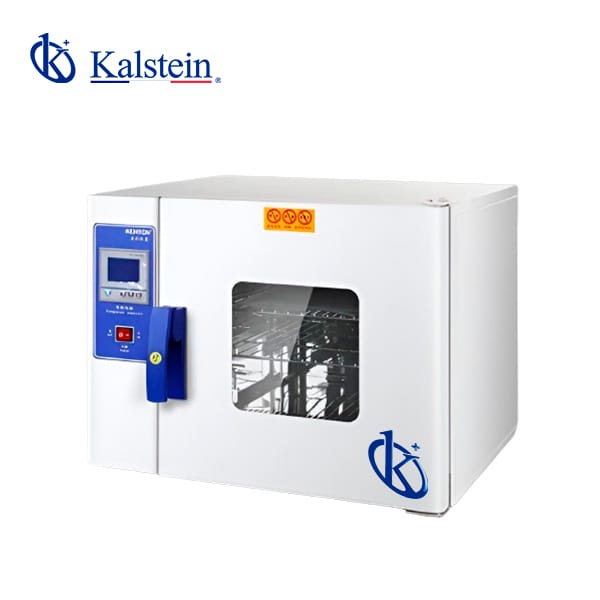Laboratory ovens are essential equipment in any scientific research environment. Their role is crucial for ensuring diagnostic precision and enhancing clinical outcomes, making them indispensable tools in medical, biological, and chemical laboratories. This article provides a comprehensive review of laboratory ovens, covering everything from their design to their performance.
If you want to explore the high-end product catalog we have for you at KALSTEIN, visit us at https://kalstein.de/category-product/laboratory-line/ovens/. We assure you that through our easy and feasible online PURCHASE channels, you will find the best prices on the MARKET. We remind you that at KALSTEIN, we MANUFACTURE high-level laboratory equipment for SALE. https://kalstein.de/
Design and Construction of Laboratory Ovens
Laboratory ovens are designed to provide precise and uniform temperature control, which is crucial for the replicability and reliability of scientific experiments. These devices are typically constructed with high-quality materials, such as stainless steel, which offers corrosion resistance and facilitates cleaning. Additionally, most ovens feature efficient thermal insulation to minimize heat loss and ensure optimal energy consumption.
The internal design of a laboratory oven also plays a critical role in its performance. Modern ovens are equipped with air circulation systems that ensure homogeneous heat distribution. This is especially important for applications requiring strictly controlled environmental conditions, such as the incubation of microbiological cultures or the drying of sensitive samples.
Advanced Technologies for Superior Performance
Laboratory ovens have significantly evolved with the incorporation of advanced technologies that enhance their performance and functionality. One of the most notable innovations is digital temperature control, which allows users to program and monitor specific conditions with great precision. This technology not only improves diagnostic accuracy but also facilitates the reproducibility of experiments.
Another advanced feature is the ability of ovens to maintain a controlled atmosphere, either through the injection of specific gases or humidity control. This is particularly useful in research requiring specific environmental conditions for organism growth or sample preservation. Ovens with connectivity to data management systems are also gaining popularity, as they allow remote monitoring and control, improving laboratory efficiency.
Applications in Various Scientific Fields
Laboratory ovens are versatile and used in a wide range of scientific applications. In biology, they are essential for the incubation of cell and microbiological cultures, providing a controlled environment that ensures proper sample growth and development. In chemistry, they are used for drying and dehydrating reagents and samples, ensuring no moisture contamination.
In the clinical field, laboratory ovens play a crucial role in processing patient samples. For instance, they are used for the incubation of microbiological diagnostic tests, where precise temperature control can mean the difference between an accurate and an erroneous diagnosis. Additionally, in pharmaceutical research, ovens are indispensable for the development and testing of new drugs, where improved clinical outcomes are the primary goal.
Factors to Consider When Choosing a Laboratory Oven
When selecting a laboratory oven, several key factors must be considered to ensure it meets the specific needs of the laboratory. First, it is essential to evaluate the temperature range and thermal uniformity the oven offers. An oven with precise temperature control and homogeneous heat distribution is crucial for obtaining reproducible results.
The size and capacity of the oven are also important, as they must suit the volume of samples being handled. Additionally, it is advisable to consider additional features, such as humidity control, gas injection capability, and digital connectivity. Ease of use and maintenance are also factors that can influence the decision, as an intuitive and easy-to-clean oven can improve the laboratory’s operational efficiency.
Advantages and Disadvantages of Laboratory Ovens
Like any laboratory equipment, ovens have their advantages and disadvantages. One of the main advantages is their ability to provide a controlled and consistent environment, which is crucial for diagnostic precision and improved clinical outcomes. Modern ovens, with their advanced technologies, also offer high precision and reproducibility, which is vital for scientific research.
However, laboratory ovens also have some disadvantages. The initial cost can be high, especially for advanced models with multiple functions and capabilities. Additionally, regular maintenance is necessary to ensure optimal performance, which can involve additional costs and equipment downtime. Despite these drawbacks, the advantages of using high-quality laboratory ovens generally outweigh the disadvantages, especially in critical scientific applications.
Conclusions: The Right Choice for Your Laboratory
In conclusion, laboratory ovens are indispensable equipment for any scientific research environment. Their robust design and advanced technologies enable precise and reproducible results, significantly improving clinical outcomes. By considering factors such as temperature control, capacity, and additional features, it is possible to select the oven that best suits the laboratory’s specific needs.
Investing in a high-quality laboratory oven not only ensures diagnostic precision but also contributes to the laboratory’s efficiency and productivity. Despite the initial costs and required maintenance, the long-term benefits make this investment essential for any scientific institution committed to excellence in research and development.

